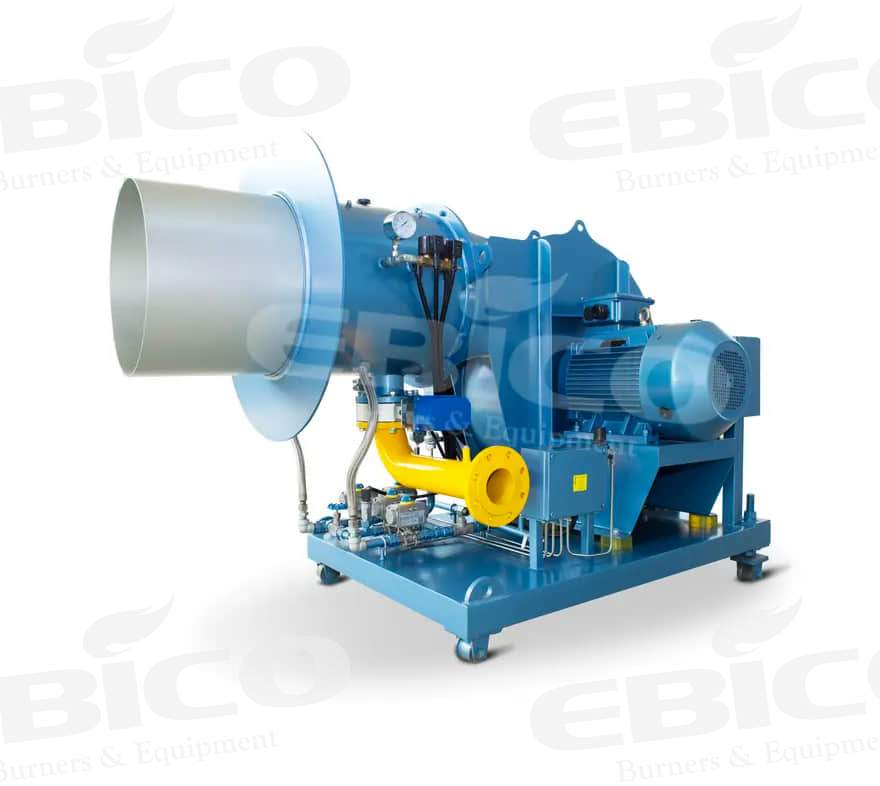Advantages And Characteristics Of Flameless Combustion Technology
Advantages And Characteristics Of Flameless Combustion Technology
First: Comparison between flameless combustion and traditional combustion methods
Flameless combustion is a mild combustion mode under low oxygen dilution conditions, which is characterized by low reaction rate, low local heat release, uniform heat flow distribution, a small temperature difference in the furnace, low combustion peak temperature, low noise, and low NOx production. In the traditional combustion method, the concentration of reactants before entering the reaction zone is high and the temperature is low, while the concentration of reactants before entering the reaction zone is low and the temperature is high. In the flameless combustion process, high-temperature preheated air and fuel are injected into the combustion chamber through different nozzles to form a strong flue gas reflux, which combines with fuel and air violently, delaying the diffusion and mixing of air and fuel. Because the concentration of reactants in flameless combustion decreases, the reaction zone expands, and the fuel burns in a high-temperature and low-oxygen atmosphere, the reaction occurs in a wide area, and sometimes even fills the whole furnace. The flame volume doubles and expands, the flame front disappears, and the temperature distribution in the whole furnace is uniform, which increases the heat load of the furnace volume, enhances heat transfer, and eliminates the local high-temperature and high-oxygen zone that occurs in the traditional combustion mode, Thereby controlling the NOx concentration at a low level.

Second: The formation mechanism of NOx in flameless combustion
The generation of NOx generally refers to no and NO2, but since the generation of NO2 strongly depends on the concentration of no and is about two orders of magnitude lower than the concentration of no, we mainly discuss no, including thermal type, rapid type, and N2O conversion type.
1. The thermal no reaction mechanism is:
N2+0=NO+N(1)
N+O2=NO+O(2)
N+OH=NO+H(3)
Since the activation capacity required for the decomposition of nitrogen molecules is large, formula (1) must be carried out at high temperatures, so the reaction speed of the whole thermal no chain depends on the slowest reaction type. As shown in formula (1), its formation rate is strongly affected by temperature. In addition, the reaction activation energy of formula (2) and formula (3) is relatively small and the reaction is fast.
2. Rapid no is generated only when the hydrocarbon is burned and the excess air coefficient is less than 1. When hydrocarbons burn, they decompose into ch CHJ and other groups, which will destroy the chemical bond between N atoms and generate free radicals such as HCN and NH. At the same time, a large number of atomic groups such as 0 and 0h in the flame react with the intermediate products of the above reactions to generate No. the following reactions control the overall reaction rate: ch + N2 = HCN + n
3. The main reaction mechanism of N2O conversion to no is as follows:
N2+O+M=N2O+M
N2O+O=2NO
For the traditional flame combustion of non-nitrogen fuel, NOx is mainly generated by thermal type due to the existence of a high-temperature flame front. Due to the expansion of flame volume, dispersion of combustion zone, reduction of peak temperature, and great reduction of thermal no share, N2O conversion of no exceed thermal no, thus becoming the main way to generate No.
Third: Characteristics of flameless combustion of solid fuels
Under the same conditions, in the simulation and test of flameless combustion of gas fuel, light oil, heavy oil, and coal, it is found that the combustion of heavy oil and coal also shows the characteristics of uniform temperature and high no emission. However, the simulation results of heavy oil and coal show that since the N content of heavy oil and coal reaches 0.37% and 1.49% respectively, fuel type NOx is far greater than thermal type NOx.
